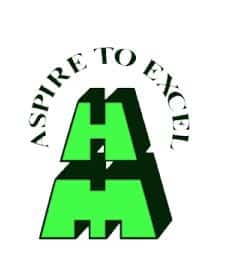Huamin Primary School

The Curriculum of Huamin Primary School
Huamin Primary strives to provide a happy learning environment where kids learn to love to help them achieve their full potential. A child’s development requires learning in a secure and empowering setting. Teachers employ the acronym ‘STAR’ (Sense of Curiosity, Tenacity in Learning, Agile & Flexible, and Responsible) to help pupils overcome problems with a positive attitude in their everyday school lives and experiences as early as Primary 1. It is critical to focus on building these positive learning dispositions in pupils to develop good learning attitudes that will last a lifetime. As a Huamin Primary School, they develop good relationships with parents to foster a caring atmosphere that encourages children to achieve their full potential.
Instructional Program
English Language
English is a widely spoken language in Singapore, utilized in various circumstances. It can also get used for practical objectives like delivering directions, providing information, or making requests. As a result, kids in Huamin Primary School must have these language-learning skills:
- Listening & Viewing
- Reading & Viewing
- Speaking & Representing
- Writing & Representing
- Grammar
- Vocabulary
STELLAR Curriculum
From Primary 1 through 6, the school uses the STELLAR (Strategies for English Language Learning and Reading) curriculum to teach English. Through a range of learner-centered and developmentally appropriate instructional approaches employing genuine children’s text, this attempts to build the kids’ foundation in literacy abilities.
Intervention Programmes
Primary 1 and 2 Learning Support Program (LSP)
For children with poor literacy abilities, the LSP offers further assistance. Students are taught by trained teachers in small groups one period a day, utilizing ways to increase their reading abilities.
SDR (School Dyslexia Remediation) – Primary 3 & 4
For kids in Primary 3 and 4, the Ministry of Education’s School-based Dyslexia Remediation program is a two-year intervention program. A comprehensive dyslexia screening process is undertaken at the end of Primary 2 to identify pupils who require assistance. The program is delivered in small groups by certified school staff who follow a remediation curriculum developed by MOE Reading Specialists. This program takes place four times each week after school hours.
Reading Remediation Programme (RRP)
The Reading Remediation Program gets designed to assist P3 students who, despite having completed the Learning Support Program in P1 and P2, continue to have trouble reading in the English language. Students will discover a variety of reading comprehension coping skills that will help them manage their everyday learning more effectively. This program runs concurrently with P3’s after-school remedial program.
Foundation EL Adapted Reading Program – Primary 5 & 6
The Reading Remediation Program gets designed to assist P3 students who, despite having completed the Learning Support Program in P1 and P2, continue to have trouble reading in the English language. Students get exposed to a variety of topics during the curriculum.
NLB Collaboration
Through the Whole School Reading Programme, the school engages with the National Library Board to foster a reading culture (WSRP). NLB librarians participate in activities at the school to encourage kids to read. Some of the programs are Books to go, Read, Swop and Share, Read, Reap and Write, and Dare to Read.











